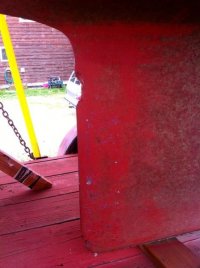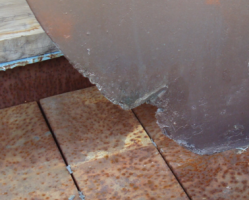geoff
Junior Member
So I have discovered an area in my bilge that is causing me some confusion and concern. Basically it is right under where the stairs are. My boat has an access panel to the bilge that is at the foot of the stairs. If I then take a flashlight and look down and back towards the stern, I can see a deep area, approximately 2+ feet deep.
When I bought the boat, we had discovered it and vacuumed out a bunch of black, stinky water. Now it's' been 6 weeks and I've noticed a swampy smell starting again, so I went looking and saw that this area was about a foot deep again. When I vac'd it out, I almost gagged...it was very sulpherous smelling.
This area is all well under where my automatic bilge pump is, which is basically up in the main portion of the bilge. There appears to be a hose at the bottom, attached to a manual pump under my seat outside, but this only deals with deep, deep water. It doesn't seem able to get that last few inches, so I've had to vacuum it.
Any other E29 owner's out there else deal with this? Any fixes? I am thinking of getting a pump down there, but it's going to be tricky.
Also, why the heck is that deep space necessary? I can't figure it out from a design standpoint. What stops me from just filling it in?
Thank you in advance for any insight.
When I bought the boat, we had discovered it and vacuumed out a bunch of black, stinky water. Now it's' been 6 weeks and I've noticed a swampy smell starting again, so I went looking and saw that this area was about a foot deep again. When I vac'd it out, I almost gagged...it was very sulpherous smelling.
This area is all well under where my automatic bilge pump is, which is basically up in the main portion of the bilge. There appears to be a hose at the bottom, attached to a manual pump under my seat outside, but this only deals with deep, deep water. It doesn't seem able to get that last few inches, so I've had to vacuum it.
Any other E29 owner's out there else deal with this? Any fixes? I am thinking of getting a pump down there, but it's going to be tricky.
Also, why the heck is that deep space necessary? I can't figure it out from a design standpoint. What stops me from just filling it in?
Thank you in advance for any insight.



